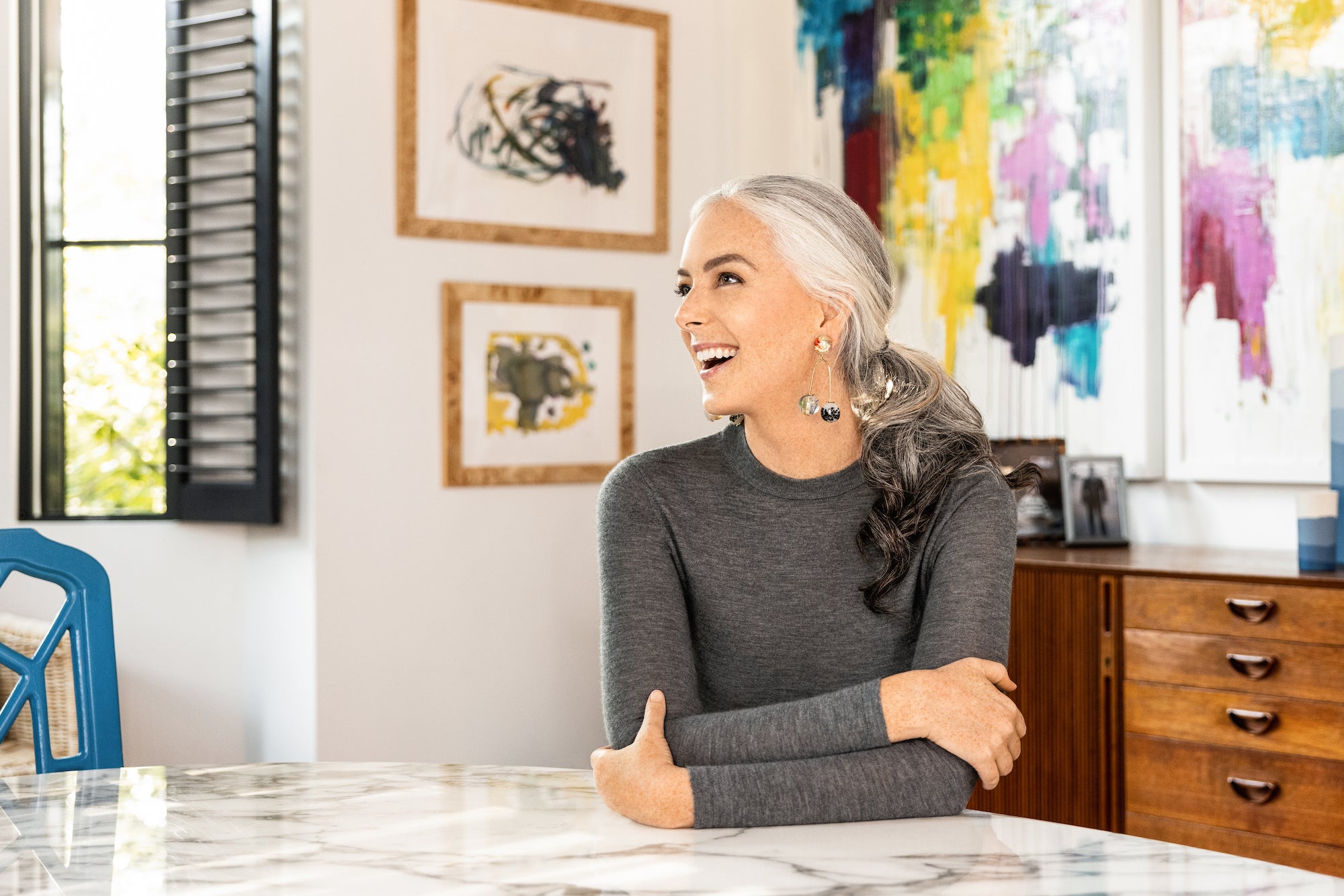The 50 States Project is a series of candid conversations with interior designers across the country about how they’ve built their businesses. This week, Pittsburgh-based designer Colleen Simonds tells us how she handles emotional clients, why she nixed hourly billing, and why she doesn’t follow popular social media advice.
Were you creative when you were growing up? What kind of career did you imagine for yourself?
When I was a kid, I thought I wanted to be an architect. I give Mike Brady credit for that. I loved The Brady Bunch, and I would see him at his drafting table in front of that window, and I was like, “I want to do that.” I thought their house was so interesting. I lived in Pennsylvania and they were in California, so there was a hook there. I was always interested in houses and plants when I was a kid, but I didn’t know about interior design. I’m also [of a generation in which] I don’t feel like creative careers were necessarily encouraged, and I didn’t know people who were in them. So I went to Duke and I was an economics major, which is so funny to me now.
How did that shape your view of the future?
Everyone there basically only becomes a lawyer, an investment banker, a consultant of some kind, or goes to medical school. This wasn’t that long ago, but the options still felt pretty narrow—I did not want to do any of those things, but I didn’t really know what else I could do. And I ended up getting a job at Gap Inc. because they came to Duke to recruit for this executive management program. I don’t know if they still have it, but it was only in its second year at the time. It was literally the only company recruiting on campus that was not a bank or a consulting firm, so I went to the interview because it was something different. I got that job, and it was the best thing that ever happened to me. I fell into a career, having no idea that it existed or what it was, that was so perfect for me, and that totally paved the way for everything that I’ve done since.
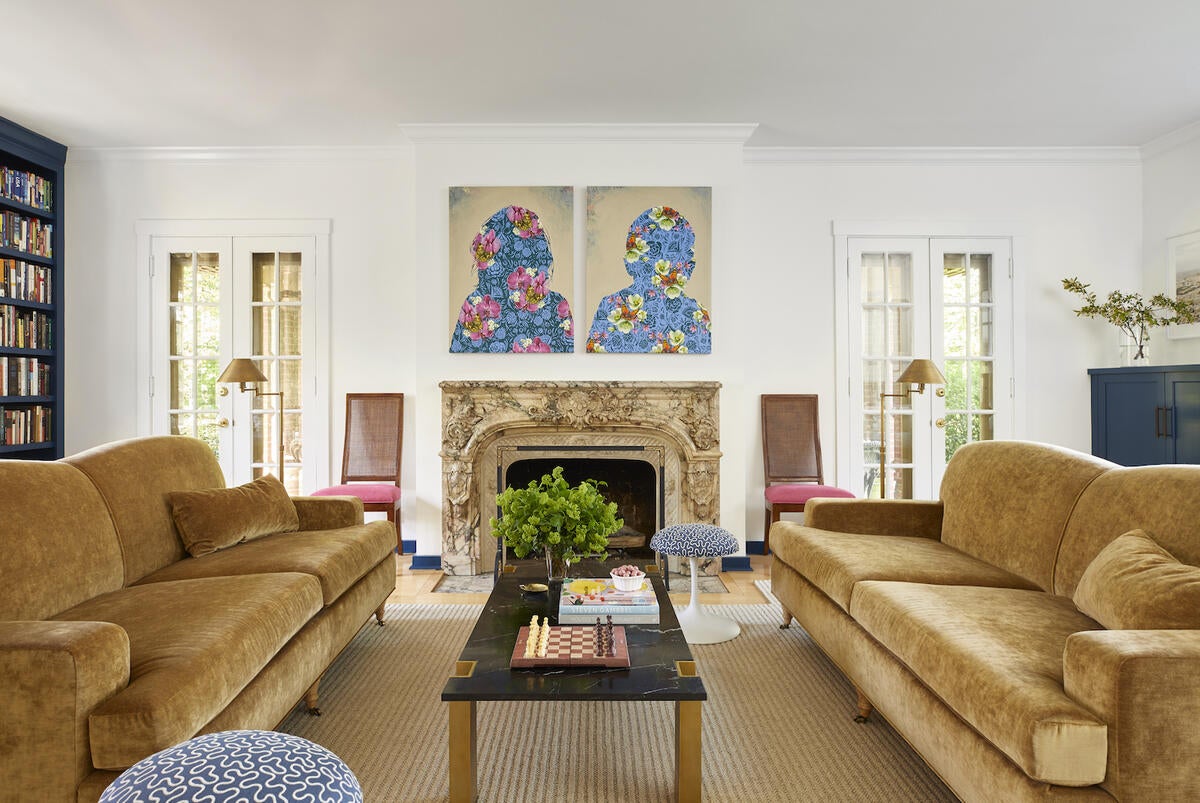
How did the training program work, and what path did it lead you toward?
The idea was that you rotated through all the functions of the company. Obviously Gap is a huge company—you rotated through Old Navy, Banana Republic and the Gap, and you spent a month or two in merchandising, design, production, planning, all the different roles. At the end of the training, you interviewed for your permanent job based on your interests and the job openings. So I went into women’s merchandising—which is basically running the business for that category, whether it’s women’s knit, women’s sweaters, women’s denim, whatever.
What was the scope of that role?
With merchandising, you’re picking what goes in the stores, how much of it you’re going to buy, and you’re monitoring the sales and inventory. It’s an incredible job, and I absolutely loved it. It is such a fabulous blend of right and left brain, which is so perfect for me, and which is so much of what I do now. I was in San Francisco with Gap for five years, and then I moved to New York to do the same job at J.Crew because the ex-CEO of the Gap, Mickey Drexler, had made that move. He brought some people from the Gap, including my boss, who brought me. I was there for seven years.
How much of the decision-making and editing in those roles is based on data, and how much of it is just gut?
It’s 50-50, gut and data. You have the data because you have years of selling history. We know we sold X million turtlenecks last year, X million cardigans last year—
This many were black, this many were a bright color.
Exactly. This many were a pattern. This was a bestseller. This stank. You have all those data points, and obviously your business has to be better year over year. If you sold 10 million turtlenecks last fall, you’re not going to offer zero turtlenecks this year. So it’s like, “OK, I know [the customer] wants a turtleneck. We’re going to give her one, but here’s the updated version. Maybe this is why it’s better, which will make her buy another one, and maybe in these colors.” You’ve got to cover the business. But it’s also gut: “What’s new and exciting?” I can look at something and just know, “That’s the bestseller.” In some ways, it’s so similar to working with clients, except I don’t have the data for the client.
What takes the place of the data for you?
I guess it’s more of a leap of faith in some ways—if I’m pushing them on something, I don’t necessarily have data backing up my decision. But it’s an instinct, a feeling that I have that’s like, “No, you’re going love this. This will be amazing. I know this is right.” And I know it’s those instincts that you have to just really lean into, and hopefully you’re right more than you’re wrong.
How else does editing for the retail marketplace inform your design practice?
It’s so much the same because I think the job was basically being an editor, and I think that’s my job now, too. My job now is to look at 3,000 sofas and pick the best one for you. That is basically the job of a merchandiser, too—the design team would present you 300 sweaters, and I’m going to pick the best 15 that we’re going to run in the store. You’re choosing, you’re picking, you’re editing the best of what’s out there, and you’re doing that based on what the customer or client wants.
And then, of course, color—I mean, I worked for Gap and J.Crew in the heyday, when the businesses were great, and both were known for their color and pattern. Working at J.Crew was like an MBA in color, which, of course, I use a ton of in my work now. I learned so much about color palettes, color combinations—color is a whole science in and of itself. There’s so much crossover between fashion and interiors. When you work for great companies with incredibly smart, talented people, you’re exposed to a lot of things. You’re working with people who have great taste and who are aesthetically inclined, and you learn a lot. It sounds sort of woo-woo, but I think it’s about developing your eye.

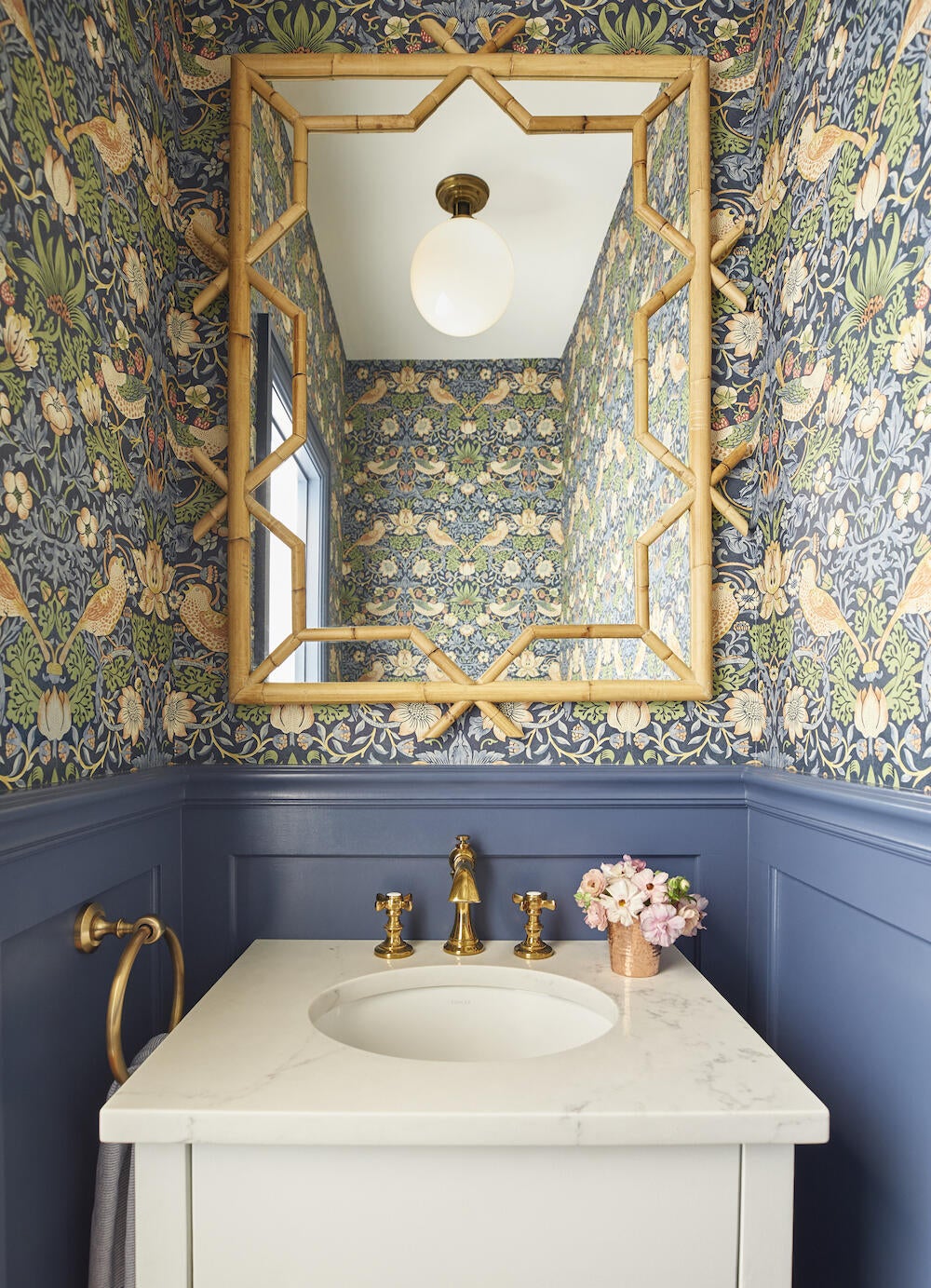
What prompted your pivot to design?
After seven years at J.Crew, the business was changing—my bosses left and I was feeling like it was time to go do something else. At the same time, I had my first child, and I was looking for more flexibility in life and I knew I would never have that in that very corporate job. I was thirtysomething, still living in New York, and I ended up doing a two-year program at Parsons for older second-career people.
Did it feel like starting over?
It did. I mean, of course I had a lot of skills from my prior jobs, but this is a completely different industry.
Maybe everyone says this, but looking back, I should have worked for somebody else [first]. But my reality was that I was 34 or 35, I had a newborn and I lived in New York. At that point in my life, I couldn’t really take a job as the sample person in a showroom at the D&D Building. That would have been an awesome experience, but it didn’t make sense for me to pay for childcare to do something like that. So I got my first client and started trying to figure it out. I don’t think that’s the best way to do it, it’s just how things happened for me because of where I was in my life.
I started in design in 2011 or 2012, and I did that until we moved to Pittsburgh in 2017. And it was a slow burn. The business was brand-new, I had a baby, and I was figuring it out, but I was not hitting all the marks on day one. I didn’t come out of the gate with 10 fantastic projects. It was a lot of years of just learning and trying and learning. There’s no shortcut, either: You need the experience, you need the time. You can’t fast-forward it. I also just want to be doing the work—I’m not interested in trying to get a brand deal tomorrow. I’m not trying to go faster and become an influencer. There are people who seem to have these meteoric rises, and that’s certainly not what I’m doing or how it’s been for me, but that’s fine if you have a different goal. For me, it’s just time and experience and learning as I go.
When did you start to feel like the business stabilized?
Not until I moved to Pittsburgh, where my husband and I are from. I felt like I was working steadily in those New York years—I wasn’t working 80 hours a week, but I was taking on smaller projects and doing the best I could. And then when we moved here in 2017, it was a totally different scene than New York, and the business really picked up.
Pittsburgh is not Dallas, or New York, or San Francisco, or Miami, or Chicago. It’s not any of those cities in terms of money or design factor or resources. It’s not that there’s no business here, but you’re trying to thread a pretty small needle and sometimes that’s challenging. So far, my bigger projects have not been here—they’ve been in Florida, Boston, and right now in New Jersey.
I would love to have bigger projects here. And I’ve had a few, but it’s just different. I live in the residential part of the city—these are older houses, so there’s a lot of renovation, but it is not really a place for new construction, where people are building houses from the ground up and starting from zero with no furniture. There’s not that much of that going on.
Where do you look to for resources?
There are some great craftsmen here for building furniture, and we certainly have talented tradespeople, but it’s not [a great place] for getting things. I have reps that come to me sometimes, but I do a ton of stuff online just because I have to. I have an enormous library here, as well—tens of thousands of samples. I like boutique lines and finding things that are a little off the beaten path, so I spend a ton of time down rabbit holes on Instagram or online, and I just order tons of stuff. And then maybe twice a year, I’ll do a run to the D&D Building in New York.
What does the firm look like today?
I have one full-time person doing operations, as of almost two years ago—keeping track of finances, invoicing and ordering, billing, taxes—and then I have a freelance accountant to do our books. I also outsource CAD and renderings sometimes, but I do all the design work—I don’t have a design assistant. So a full plate for me is quite full because I’m in the weeds on things big and small. Every doorknob and light fixture and fabric—I’m choosing it. I’m happy for it to be that way, but it’s very full. We typically have about 10 projects going at a time.
How did making that full-time hire change your experience within your firm?
She’s wonderful in every way, and I would be absolutely underwater without her. Before I hired her, I had a remote person doing the purchasing. But I look back and it’s laughable—I have no clue how I was doing all of it. And as you get bigger, the business gets more complex—it’s not a one-person job anymore. It was smaller then, and I guess it was manageable until it wasn’t. I wanted to take on bigger, more complex jobs, and you can’t because that requires a different level of support.
Was there a moment when you really realized the time to hire was now?
I got hired to do a new construction house in Naples, Florida. The project was literally buying every toothbrush and sofa and everything in between, and I had to travel out of state, figure out taxes, order—the complexity just multiplied by 10, or maybe 100, and that was just one project. When I [agreed to] that project, I realized, “I’m not going to be able to keep up with all of this and do a good job.” That was the catalyst and I was right: There is no way I would have been able to do that without somebody else.
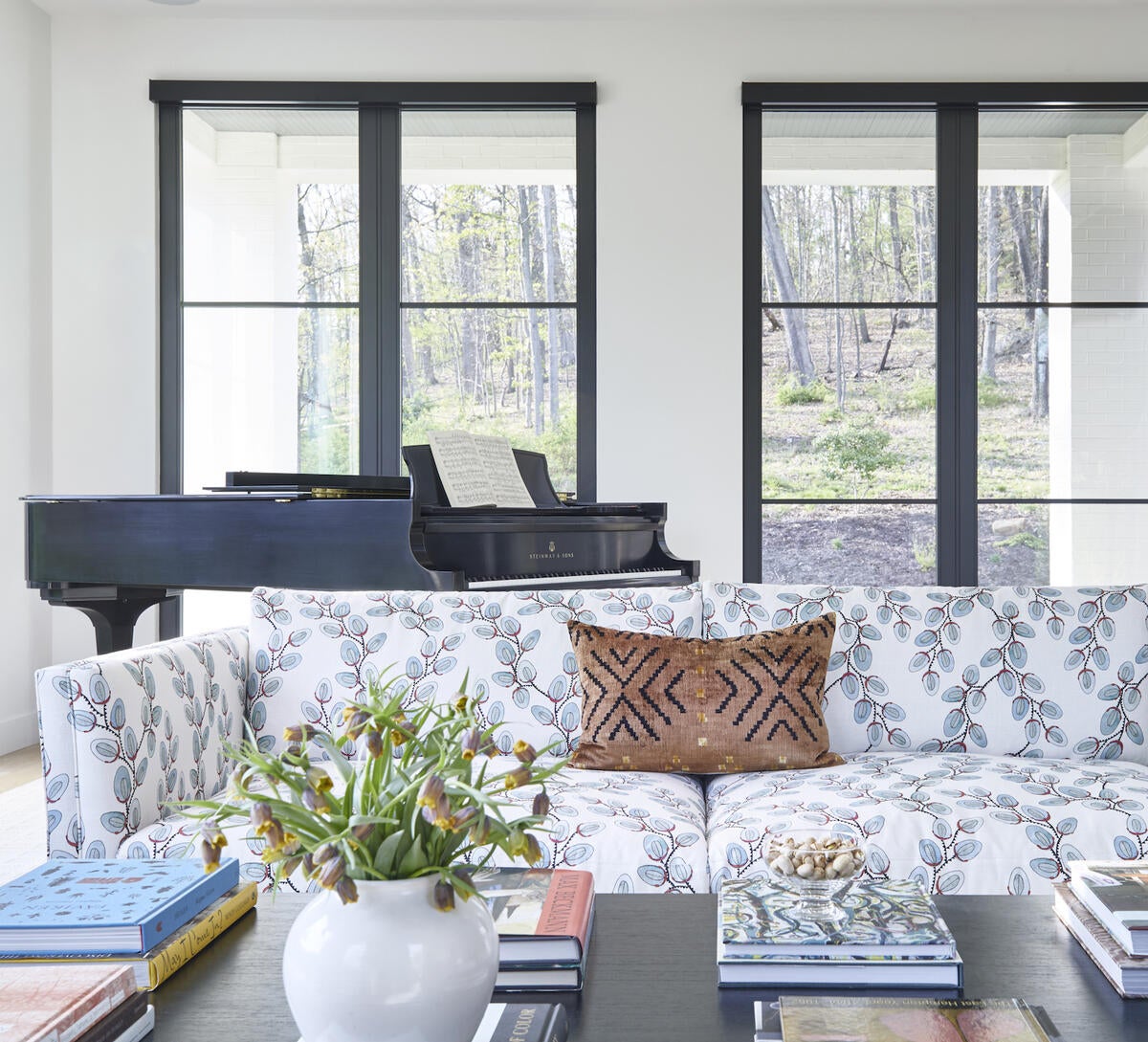
How have you approached billing for the work?
Oh, my God, everyone’s Achilles’ heel, right? Or is it just mine?
I think it’s everyone’s.
So I’ve done everything. I’ve tried it all. Lately, I’ve tried to get away from hourly, simply because I hate working like that. So for larger jobs, we try to do a flat design fee along with our “markup”—which is another terrible word that I hate to use. And I’m always trying to come up with some other words for that.
My favorite lately is “purchasing fee.”
Purchasing fee! OK, so then we have a purchasing fee on whatever we’re buying. That is really where I’m trying to be.
Are there exceptions to that for you?
Occasionally, there are still things that I will do hourly. I have to accept the reality that I live in Pittsburgh, so every person is not coming to me with a six-figure budget and saying, “You do everything, here are the keys.” That’s not my world. Depending on where we are financially, I’ll sometimes do the hourly thing—it’s quicker cash and not as big of a mental investment, either. Although, I will say, that doesn’t ever really turn out to be true, because once I’m working for someone—
You’re in it.
Right. I don’t actually give them less attention. I want to do a great job and I have high standards. But all of that is to say that sometimes when it’s someone who might not need their entire house—maybe they need 10 hours with me—I’ll do it, but it’s going to be at $225 an hour. My hourly fee gets a little higher for that—at least, that feels high for me, but it’s probably not high for other people. We’ll burn through the 10 hours quickly, because people always need more, and it usually always snowballs into something bigger.
What changes when you do the design fee and the markup? Why does that feel better or feel different?
I want to work on projects where there’s a bigger-picture vision. I’m good at real transformations, and I want to feel like I have that purview. Somebody saying, “I need some finishing touches on my family room,” is not really where I want to be right now. I think the design fee just establishes a broader scope, a vision and a partnership.
I am also very invested, and I don’t want the relationship with my clients to feel that transactional. That’s just not how I view the work. It’s not like you say, “I want a new dining room,” and I spit it out in two hours, we give it to you and then I don’t ever talk to you again. For me, something about the hourly thing makes me feel like I’m a robot for hire—and frankly, I think I have more to offer than that. I have more creatively to bring to the table than that. The design fee feels more reflective of the skills and the value and the creativity that I can bring to you.
For me, billing is this constant struggle of thinking that there’s a right way, and am I doing it the right way? This is such an expensive business, and it’s hard to talk about really big amounts of money. It also feels like you’re placing a real dollar figure on yourself: I am worth X. That’s hard. I worked for very large companies before this, and in those roles you’re assigned a salary—somebody else is kind of determining, “This is what you’re making.” Maybe you have some input in that, but it’s not completely under your control. It’s a very, very different place to be to say, “You’re going to pay me this because the quality of my work is worth it.” And if people are like, “Whoa,” you’re in a position of trying to sell people on your value. I find that so uncomfortable.
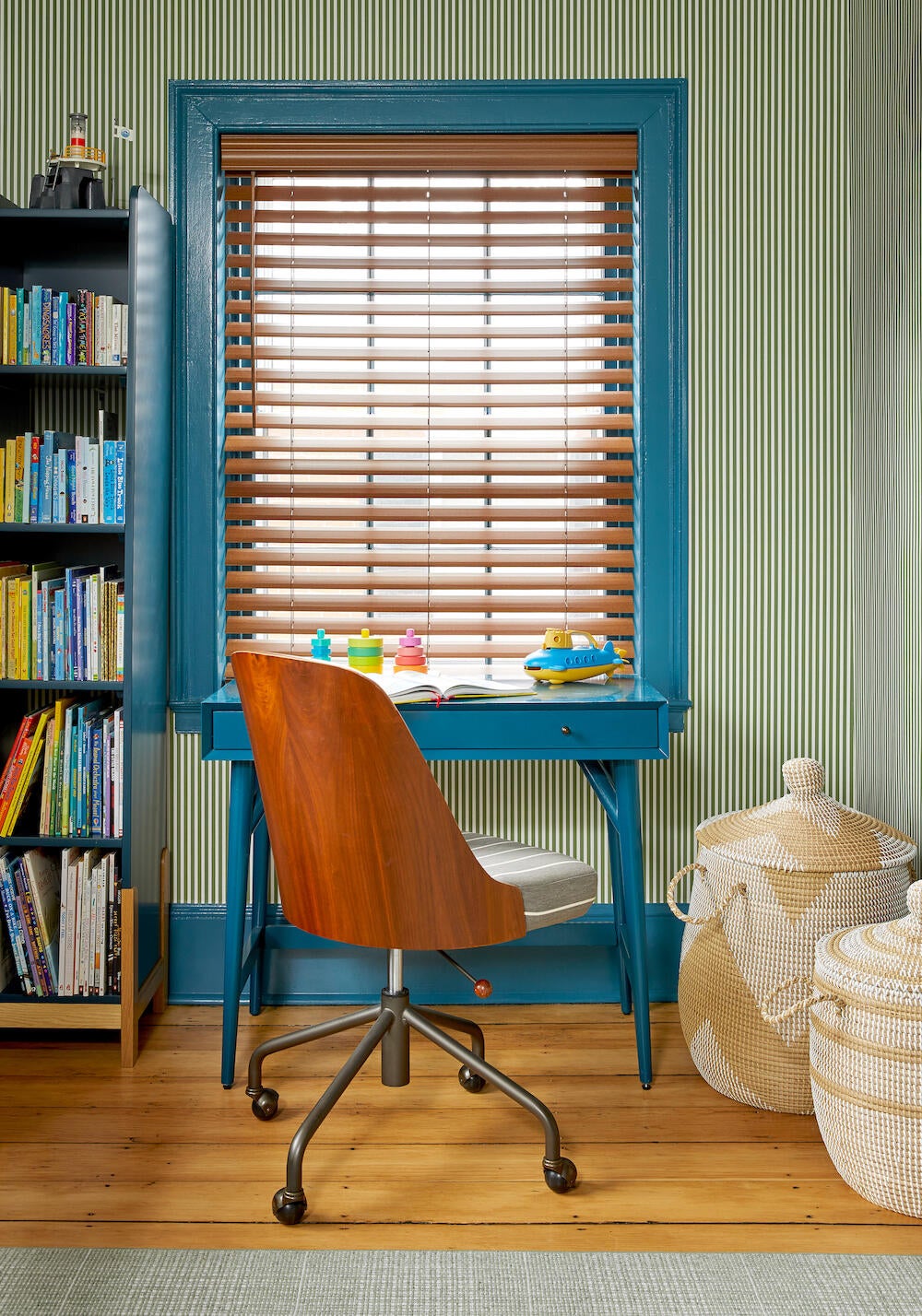
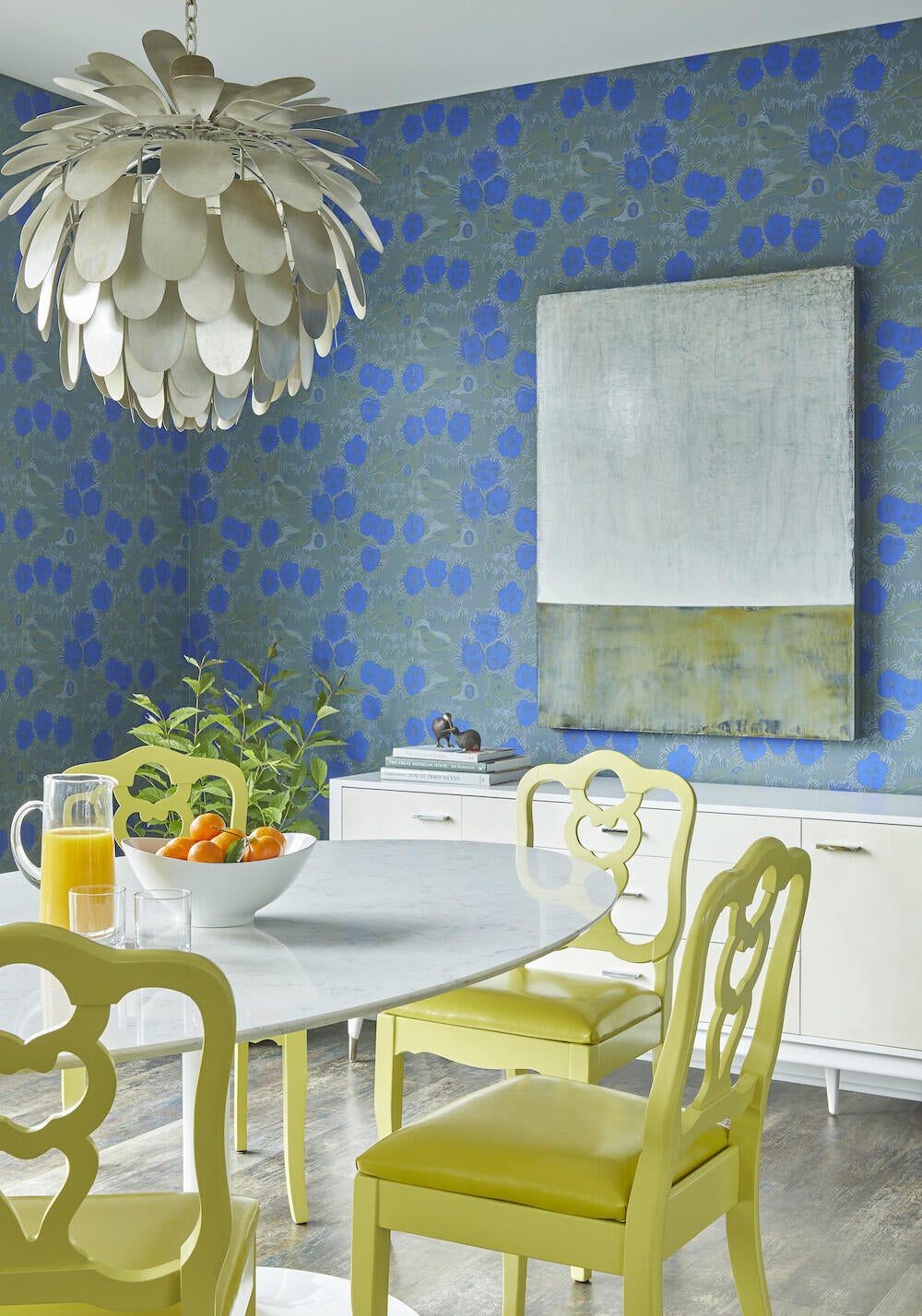
What do you see as an opportunity when you look ahead? What do you envision the firm becoming?
All I’m interested in is really great creative work for people and for clients that want what I can do. So I don’t think it’s wildly different than what I’m doing now. I’m one person and I don’t even know that I want to hire another person. So as long as it’s just basically two of us, there’s a limit on the amount of work I can do. I can do what I’m doing now and it’s really good.
The only thing that drives me is creativity and creative challenge. So the more projects that I can get where I get to take creative chances and where clients will say yes, that’s great. But I can probably only have 10 or 12 of them. I can’t handle 50 of them.
Are clients willing to go along for the ride and say yes?
I have to tell you, one of my clients just called me crying about her house. When you called, I was just thinking to myself how much this job is truly like therapy. She was like, “Do I need to step away from this house? I don’t know what’s going on.”
Is what’s upsetting her anything out of the ordinary?
They just moved here, so she’s new. And I think it’s so many things: Moving is stressful, and it’s this big new house that is not exactly what she loves, so we’re trying to make it what she loves. So they’re renovating it, which is stressful. And that means spending all this money—it feels like you’re hemorrhaging money, which you kind of are. And everything’s a mess, right? And it doesn’t look good yet. Everything’s a disaster. You’re bleeding cash and we keep sending bills. I think she’s just like, “Oh, my God.”
What can you say to make that feel better, even if there’s not an immediate fix?
I said, “What do you love about the house? Let’s start there. All is not lost—we’re not throwing the baby out with the bathwater here.”
I just have to reassure her. I think people are very afraid of making mistakes, so a huge part of the job is just being like, “I’m here. I’m guiding you. I will not let you make mistakes.” It’s giving them the confidence that they don’t have, or trying to boost their confidence that is waning.

I wanted to ask you about social media, because I love following you and I love the way you talk about pattern and color and normalizing wallpaper. Is there a strategy there?
Oh, boy. No, there’s no strategy, never has been. In fact, it was midnight last night and—here’s how you know you’re old—I’m typing into Google, “How do you make a Reel?” I don’t even know how.
I’m not sure I do, either.
I mean, I’m late to the game. I realized that working in a visual medium, you have to be on Instagram. But I wasn’t even on it until four years ago. It makes me uncomfortable, so it’s hard for me. But the reason I post anything is because I’m trying to show people how much work and thought goes into it. I’m trying to not make the work be so invisible. Because it is a hell of a lot of work, and it’s not like fluffing a few pillows and everything’s perfect. As a person who is a learner, I love to see other people showing what goes into getting a perfect picture. House Beautiful used to have a feature that I absolutely dissected every time—it was the one where they would interview the designer and ask a zillion questions about all the choices in the house and the process. That to me was so interesting. I still think about that. And I think, “OK, well, maybe a little bit of that is what I can show.” There is a reason I’m not just throwing spaghetti at the wall here. There is a reason that we’re doing all these things. And this is all about problem solving. And hopefully people can maybe learn something.
I have a visceral reaction to patterns and colors and stuff that I love. I’ll see something and I’m like, “Oh, my God, that.” So sometimes it’s like just taking pictures of color combinations, pattern combinations, things together. Color for me is everything. I really am sitting on the floor throwing combinations together. I’m just showing you that this is actually how I do it.
Is there anything you choose not to show?
I don’t want to show myself. Every person is like, “You have to be on there,” and I don’t do that. I don’t put my clients on it. I try to be respectful of my clients. I try to be super professional about it. Every social media guru out there tells you that you’re supposed to be vulnerable, and that’s how you get people to follow you. I’m not in that game. I’m not here to be talking on the camera about my innermost feelings—that’s not my thing. I do want to get clients from Instagram, so I don’t want to be on there looking unprofessional or musing about God knows what or complaining. It is a marketing tool. I don’t make it very personal and I like it that way. I have stronger opinions about some things, but I wouldn’t voice them there. That’s not really my thing.
What does success look like for you?
Creative fulfillment. I’m so incredibly lucky that I’m already doing what I love to be doing. So, more of this. More creativity. You know, being balanced in life, as much as that’s ever possible, and working with people who want what I do, and feeling creative fulfillment—that is success for me. I’m already working in the career and the industry that I absolutely love that brings me so much joy. I’m super lucky and grateful for what I already have.
To learn more about Colleen Simonds, visit her website or find her on Instagram.
















